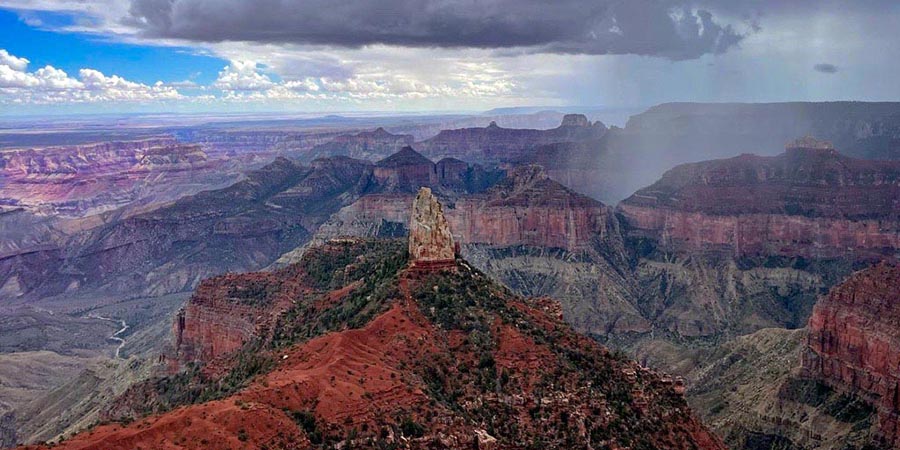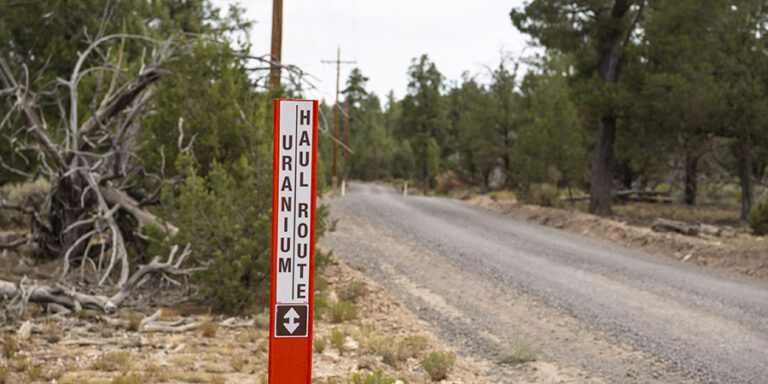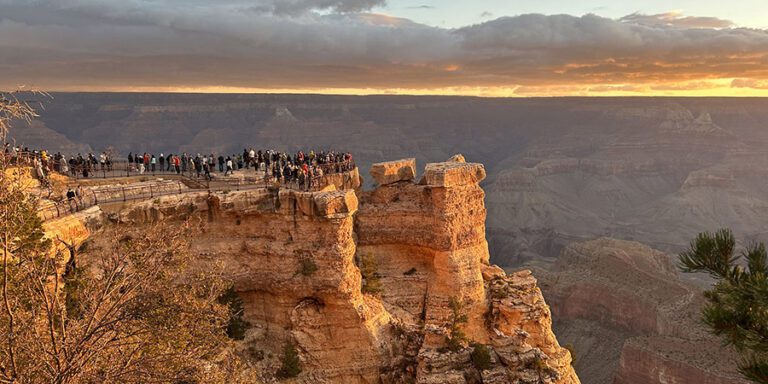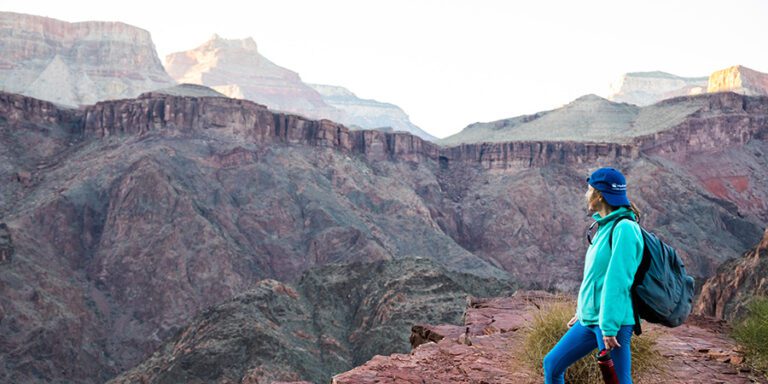
From nautiloids to ferns to fish from long ago, fossils in the Grand Canyon hold secrets to life in an ancient time.
More than a mile deep, 277 miles long, and, in places, 18 miles across, it is hard to fully comprehend the scale of the Grand Canyon. At least 10 crimson, muav, and golden-hued horizontal layers of rock create the distinct, stair-stepped walls that frame its depths.
The rocks here at the Grand Canyon are not necessarily unique; similar rocks can be found around the world. However, its rock layers record ancient environments from millions of years ago. Nautiloids roamed a shallow sea, catching prey with octopus-like tentacles. Seed ferns thrived in warm swamps and forests. Fish swam in an ocean. Early reptiles scurried across sand dunes.
In the Grand Canyon, these secrets are hardened into stone right in front of your eyes like an open book.
Fossils as clues to the environment

Fossils are preserved remains or traces of plants, animals, bacteria, and other living things. They form when organisms, footprints, and burrows are covered by sediment. And you know what the Grand Canyon is made of? Sediment!
Layers of sandstones, shales, and limestones are stacked on top of each other, trapping clues about the creatures that lived during each chapter of the canyon’s geologic history.
Learn the rock layers of the Grand Canyon
The fossil record at Grand Canyon National Park spans millions of years, from ancient bacteria to Ice Age mammals. Starting from the bottom of the canyon and going up toward the rim, here are some of the fossils you can see.
Imprints in the stone
Trilobites are some of the oldest fossils to appear in the Grand Canyon’s fossil record. These sea creatures, related to insects and crustaceans, roamed a shallow ocean between 525 to 505 million years ago searching for dead organic material to eat. Trilobite fossils can be found in the Tapeats Sandstone, Bright Angel Shale, and Muav Limestone rock layers.
Around 350 million years ago, the ocean was deeper, and more advanced sea creatures like bryozoans were present. Bryozoans were filter-feeding animals that clumped together while reaching tentacles up into the water column to grab food. The lacy structures of these arms can be found, along with corals and coiled nautiloid fossils, in the Redwall Limestone.

Life changed drastically around 320 to 280 million years ago. The Grand Canyon region was teeming with plant life, including fern-like organisms and conifers. Large insects, including dragonflies with 28-inch wingspans, also started to appear. Plant structures, dragonfly wings, and animal tracks can all be found in the Supai Group and Hermit Shale layers.
Close to the rim of the Grand Canyon lies the Coconino Sandstone. This layer is the result of a vast sand dune-covered landscape, and it’s common to find reptile, scorpion, and spider tracks from when these critters were scurrying across the dunes 280 million years ago.
Don’t have much time at the Grand Canyon? Visit the Yavapai Geology Museum for fossil displays and an interactive rock layer exhibit.
Please don’t move or take any fossils you find in the Grand Canyon. The original locations are incredibly important for scientists to learn about the mysterious environment here millions of years ago.
Viewing fossils from the rim

As you stand on the Kaibab Limestone on the South Rim, imagine what the Grand Canyon landscape was like 275 million years ago — a vast ocean full of sea life, including fish, sharks, cephalopods, shrimp, and crinoids. Look closely at the stone at your feet for the small, round Cheerio-shaped crinoids, which were sea lilies in the ancient ocean.
Search for hardened teeth from fish long ago by Hermit’s Rest, maybe you’ll even find the grainy skeleton of a sponge, one of the simplest and earliest organisms to evolve on Earth and still live today. Step into geologic time on the Trail of Time, an interpretive walk along the South Rim’s Rim Trail.
There’s an ancient animal conspicuously missing from this history though — dinosaurs. The youngest rocks at the Grand Canyon are still older than the oldest known dinosaurs, so you won’t find the Jurassic Park reptiles here. Grand Canyon National Park isn’t just rock — the park is teeming with wildlife, both past and present.




